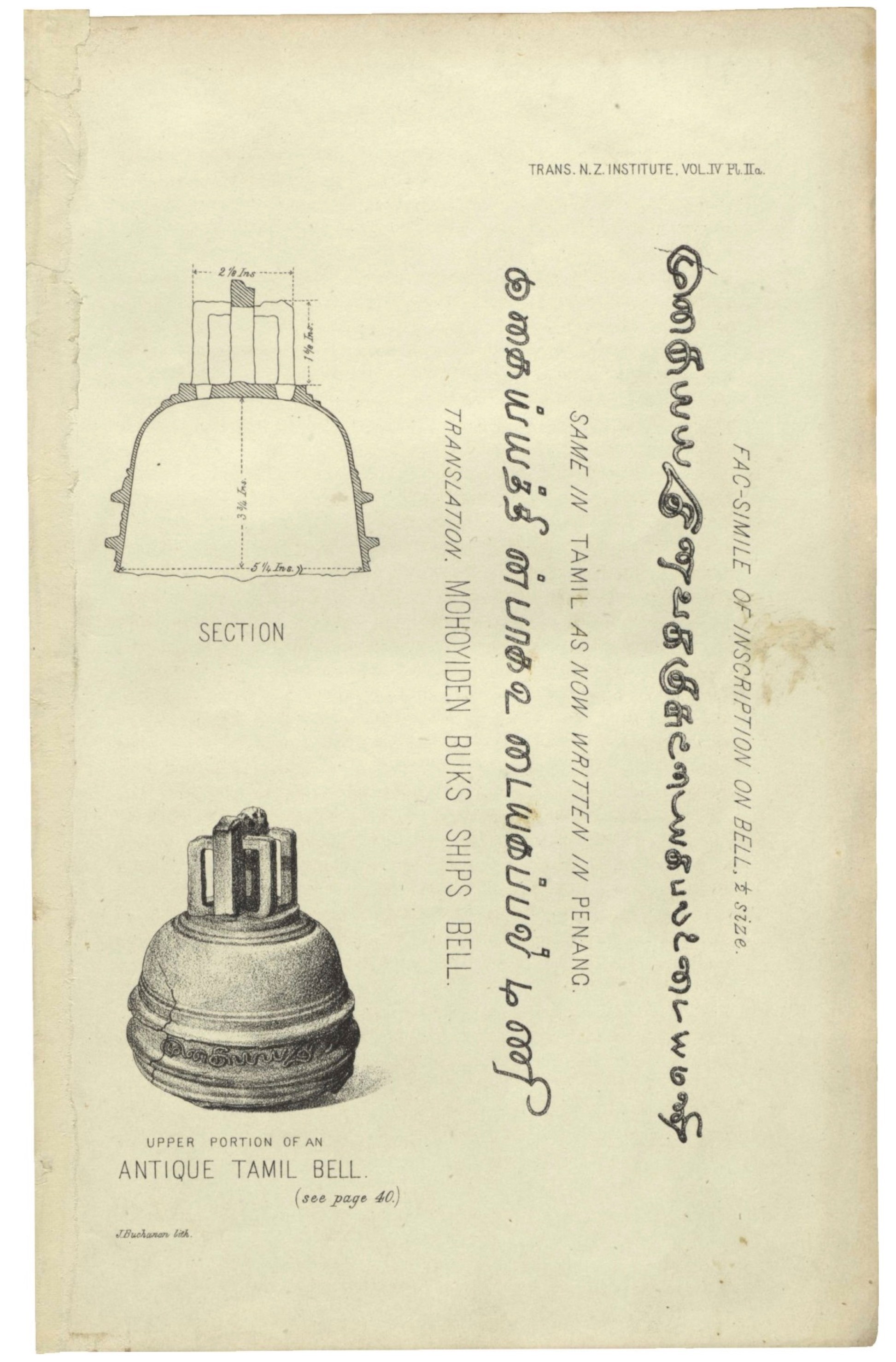INFO
| Name | Tamil bell |
| Names of Artists | Unknown maker(s) |
| Materials | Bronze |
| Dimensions | 166mm (height), 155mm (diameter), 2.639kg (weight) |
| Artform | Craft/Object |
| Description | Ship's bell with tamil inscription |
ABOUT
This broken bronze bell, which features an inscription in Tamil, is part of the collections at the Museum of New Zealand Te Papa Tongarewa. It’s unclear how and when the bell came to be in Aotearoa, but because of its early date of arrival, it has become a source of inspiration for Tamil communities in Aotearoa seeking to connect with tangata whenua in the present day.
The remaining fragment is the crown of a bell. Christian missionary William Colenso said he came across it being used as a pot to cook potatoes by an iwi near Whangarei in 1841. He reports he was told that the iwi had been using it for several generations and that it was found among the roots of a tree after the tree was lifted by strong winds.
The bell features an embossed inscription in an older form of Tamil script. Although Tamil seafarers and traders are believed to have reached northern Australia in the 14th century, there are no historical records to indicate they ever sailed to Aotearoa. Speculation over how the bell came to be here has included the theory that Tamil sailors visited Aotearoa, or that it washed up after a shipwreck, but no conclusive evidence has been found to support any particular theory. Recent scholarship suggests that the bell might date to the 17th or 18th century. Nalini Gopal, a curator from the Indian Heritage Centre in Singapore spent time studying the bell in 2019. She raised doubts about Colenso’s story, as the crown of the bell is probably too small to be used as a cooking vessel. Gopal suggests that the inscription refers to the protection of the ship, saying “A lot of Muslim merchant communities in Southeast Asia revered [a saint called] Mohideen Bux [...] The idea was that the ship would be protected because it was named after the saint”.
In recent years, there has been interest in the bell among Tamil communities living in Aotearoa, because it represents an early connection between Tamil and Māori cultures in Aotearoa. Raveen Annamali, the president of the Aotearoa New Zealand Federation of Tamil Sangam has said, "We feel very proud that there is some connection between the Tamil community and tangata whenua." He cites the bell as inspiration for learning more about Māori culture and creating the federation, which has since held hui with iwi in Papakura and in Rotorua to strengthen Tamil-tangata whenua bonds and has translated Te Tiriti o Waitangi into Tamil.
Colenso traded an iron pot for the bell and bequeathed it to the Colonial Museum at his death. It is now part of the collections of Te Papa. “I think the fact that there’s so little information attached to the bell is actually part of why it is so endearing. Because it ignites the imagination,” said Grace Gassin, curator of Asian New Zealand histories at Te Papa.
LINKS
Ship's Bell | Collections Online - Museum of New Zealand Te Papa Tongarewa
How a mysterious bronze bell became a cultural beacon | The Spinoff
Mysterious artefact helps forge stronger Tamil-Māori community connections | RNZ
Atlas Obscura: The Mystery of New Zealand’s Tamil Bell, an Archaeological ‘UFO’
